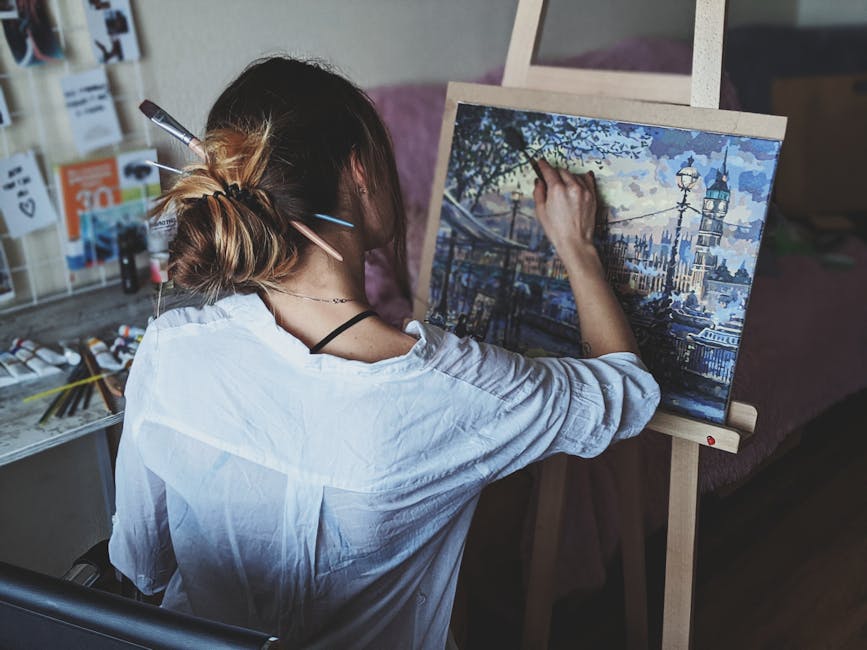Historical Evolution of Monochrome Art
Monochrome art has a rich history spanning from ancient cave paintings to contemporary installations. Early civilizations used limited color palettes to tell stories on cave walls. During the Renaissance, artists like da Vinci and Rembrandt explored emotions and textures using restricted palettes.
The 20th century saw a shift towards abstraction, with artists like Kazimir Malevich and Piet Mondrian embracing monochrome canvases. Yves Klein made his mark with International Klein Blue, while the Dansaekhwa movement in Korea used monochrome as a form of meditation and defiance.
Monochrome art expanded beyond canvas, influencing performance art and merging with music and dance. Today, artists continue to push the boundaries of the medium, challenging viewers to engage deeply with seemingly simple works.

Techniques and Materials in Monochrome Art
The techniques and materials used in monochrome art are diverse and ever-evolving. Artists employ various surfaces and textures to create depth and interest within a limited color palette. Traditional oil paints remain popular, but many artists now use:
- Acrylics
- Gouache
- Industrial materials (e.g., household enamel paint)
Contemporary artists often blend traditional elements with innovative materials, developing new pigments and acrylic gels that manipulate light and texture. Sculpture and installation art have become fertile grounds for monochrome exploration, using metals, woods, and plastics to create immersive experiences.
Technology has opened new doors for monochrome art, with computer-aided design and 3D printing allowing for complex three-dimensional creations. Performance artists use light projections and soundscapes to transform spaces, creating dynamic monochromatic environments that challenge perspectives and engage multiple senses.

Monochrome Art and Viewer Interaction
Monochrome art invites viewers into a unique dialogue, encouraging introspection and emotional engagement. The apparent simplicity of a single-hued work can provoke deep contemplation, as viewers scrutinize every nuance and brushstroke.
Like a whispered secret, monochrome art draws viewers closer, resonating differently with each individual.
The interaction often transcends the visual, becoming a multisensory experience as viewers move around the piece, noticing shifts in light and texture.
Immersive monochrome installations amplify this connection, transforming observers into active participants who physically engage with the artwork. These experiences invite viewers to explore not just the art but also their own perceptions and emotions, creating a constantly evolving dialogue between the work and its audience.
Controversies and Debates in Monochrome Art
Monochrome art has long been a subject of debate in the art world. Critics often dismiss it as lacking skill or depth, while supporters argue that its simplicity allows for profound impact and introspection.
Works like Kazimir Malevich's "Black Square" have sparked discussions about the nature of art itself. Yves Klein's International Klein Blue challenged traditional artistic norms, leaving both critics and enthusiasts pondering the role of color in art.
The debate often centers on the essence of art – is technical complexity necessary, or can a simple, monochromatic work evoke equally powerful emotions and interpretations? This ongoing discourse keeps monochrome art relevant and thought-provoking in the contemporary art scene.
Monochrome Art in Performance and Installation
Monochrome art in performance and installation transforms viewing into an immersive experience. These works envelop viewers in single-color environments, challenging perceptions and engaging multiple senses.
Artists like James Turrell create installations that manipulate light and space, inviting viewers into monochromatic dreamscapes where boundaries between art and audience blur. In performance art, dancers clad in various shades of a single color move to minimalist soundscapes, focusing attention on form and movement.
These immersive experiences reimagine art as a living entity that evolves with viewer interaction. They bridge the gap between artist intent and audience perception, fostering connections that are both profound and personal. As these forms continue to develop, they remind us of the infinite possibilities within a single color, encouraging exploration with an open mind.
Monochrome art, with its restrained palette, invites us to pause and reflect on the subtle power of simplicity. As we engage with these singular canvases, we're reminded of the profound dialogue they inspire, challenging us to look beyond the surface and explore the depths of our perceptions and emotions.
- Malevich K. The Non-Objective World: The Manifesto of Suprematism. Dover Publications; 2003.
- Klein Y. Yves Klein: With the Void, Full Powers. Hirshhorn Museum and Sculpture Garden; 2010.
- Turrell J. James Turrell: A Retrospective. Los Angeles County Museum of Art; 2013.
























